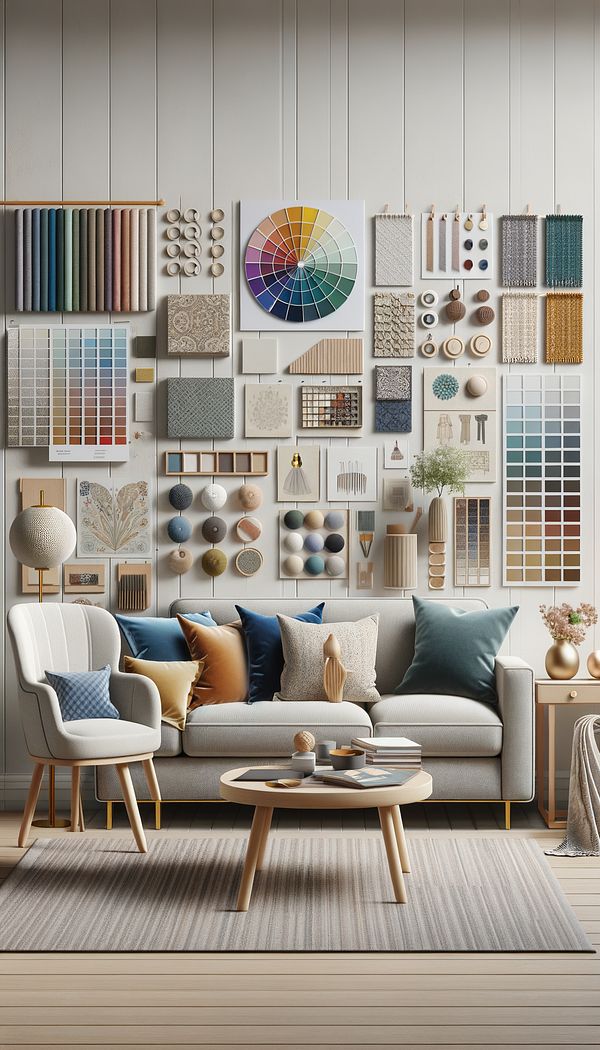What is Cohesive?
Cohesive refers to a design that appears unified and harmonious, with all elements working together effectively.
Description
In the context of interior design, achieving a cohesive look means creating a space where every element, from furniture to color schemes, textures, and decorative objects, works together harmoniously to achieve a unified aesthetic. It's about ensuring that all components of a design relate to each other in some way, be it through style, color, texture, or theme, fostering a sense of balance and uniformity throughout the space.
Cohesiveness can be attained through various means, such as sticking to a consistent color palette, selecting furniture that complements the overall style of the room, and using matching or complementary textiles and upholstery. It’s important to remember, however, that cohesiveness does not necessarily mean uniformity; a room can still display a variety of styles, colors, and textures while maintaining a cohesive appearance if these elements are balanced and thoughtfully integrated.
Moreover, a cohesive interior is not just aesthetically pleasing but also creates a more comfortable and welcoming environment. It allows the eyes to flow smoothly from one object to another, creating a visually appealing and functional space. For interior designers, achieving this balance is often one of the ultimate goals of a design project, requiring careful consideration and planned execution.
Usage
For example, in a modern living room, a cohesive design may include a neutral color palette with splashes of color in decorative pillows, a sleek leather sofa that matches the clean lines of the coffee table, and abstract art pieces that tie the room's color scheme together. Similarly, in a bohemian-styled bedroom, cohesive elements could be a mix of rich, vibrant colors in the textiles, unique vintage furniture pieces, and eclectic decor that follows a specific theme or inspiration.
FAQs
-
How can color help achieve a cohesive design?
Color is a powerful tool for creating a cohesive design. By choosing a consistent color palette and repeating key colors throughout a space, designers can create a sense of harmony and unity. This could mean matching the color of the walls to the throw pillows or ensuring artwork complements the overall color scheme.
-
Can a room be eclectic and still cohesive?
Absolutely! Cohesiveness in an eclectic room comes from finding a balance and connection among diverse elements. By carefully selecting pieces that, despite their differences, share common colors, textures, or themes, an eclectic room can still achieve a unified and cohesive look.
-
Why is planning important for achieving cohesiveness?
Planning is crucial as it allows designers to map out the room's layout, choose a unified color scheme, and select pieces that complement each other. Without a planned approach, the room could end up feeling disjointed or cluttered. Planning ensures all elements work together towards the desired cohesive outcome.
Practical Application
To create a cohesive interior, start by defining the overall style and color palette of the space. Consider how different elements such as furniture, textures, lighting, and decorative objects will work together. Use mood boards to visualize the design and make adjustments as needed to ensure everything feels unified. Remember, cohesion is about balance and harmony, so don't be afraid to mix different styles or elements, as long as they connect in a meaningful way.
-
Decorative Techniques322 articles
-
Space Planning & Layout134 articles
-
Decorating Principles & Elements330 articles
-
Color & Patterns154 articles
-
Textiles & Upholstery252 articles
-
FeltFelt is a non-woven fabric made from compressed and matted fibers.
-
OttomanAn ottoman is a versatile piece of furniture commonly used as a footrest, seat, or coffee table.
-
TrivetA trivet is a stand or support used to hold hot pots, dishes, or serving bowls to protect surfaces from heat damage.
-
Bunk BedA bunk bed is a type of bed in which one bed frame is stacked on top of another, allowing two or more beds to occupy the floor space usually required by just one.
-
Drop FrontA drop front refers to a hinged panel on a piece of furniture that can be lowered to provide a horizontal surface.
